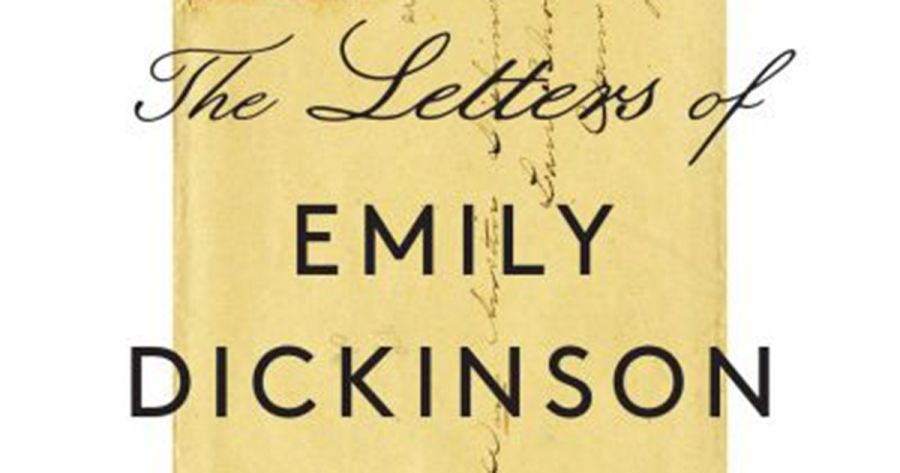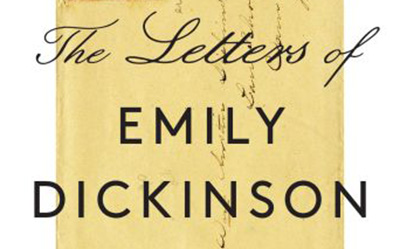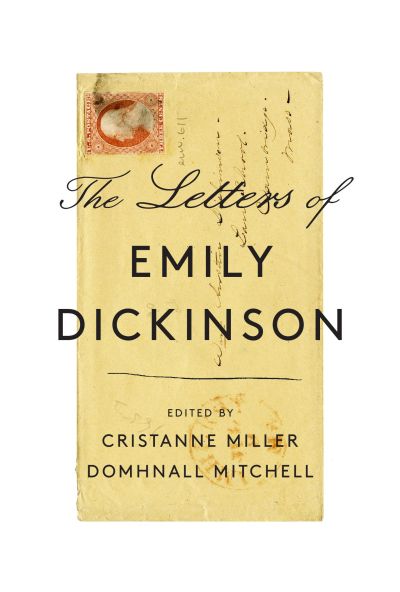
- Free Article: No
- Contents Category: Letters
- Review Article: Yes
- Article Title: Telling it slant
- Article Subtitle: Emily Dickinson in the world
- Online Only: No
- Custom Highlight Text:
In his introduction to The Letters of Emily Dickinson (1958), Thomas H. Johnson asserted that Dickinson ‘did not live in history and held no view of it, past or current’ and that her ‘rejection of society … shows itself to have been total, not only physically but psychically’. This paternalistic miscasting of Dickinson as the fey ‘Myth’ of Amherst, clad in her snow-white dress, began in the poet’s own lifetime (1830-86) and persisted well into the twentieth century. Ironically, Dickinson was aware of her inadvertent mystique, writing to her cousin, ‘Won’t you tell “the public” that at present I wear a brown dress with a cape if possible browner, and carry a parasol of the same!’
- Featured Image (400px * 250px):

- Alt Tag (Featured Image): Eleanor Spencer-Regan reviews ‘The Letters of Emily Dickinson’ edited by Cristanne Miller and Domhnall Mitchell
- Book 1 Title: The Letters of Emily Dickinson
- Book 1 Biblio: Harvard University Press, US$49.95 hb, 965 pp
- Book 1 Cover Small (400 x 600):

- Book 1 Cover (800 x 1200):

- Book 1 Readings Link: https://www.readings.com.au/product/9780674982970/the-letters-of-emily-dickinson--emily-dickinson--2024--9780674982970#rac:jokjjzr6ly9m
That Dickinson has long been portrayed as existing and writing at a remove from her historical setting has allowed subsequent generations to imaginatively project upon her, remaking her in their own image. The Apple TV+ series Dickinson (2019), for example, gives us a spirited young woman who frustrates her family’s attempts to secure her marriage, cross-dresses to attend a lecture open only to men, and begins a passionate lesbian affair with her best friend, Susan Gilbert. Despite the series’ deliberate visual, lexical, and musical anachronisms, it may be that this decidedly Generation X incarnation of Dickinson is closer to the truth than Johnson’s virginal recluse, whose ‘acute sensitivity’ was ‘a handicap that she bore as one who lives with a disability’.
Cristanne Miller and Domhnall Mitchell’s new edition of The Letters of Emily Dickinson certainly suggests so. Collating all 1,049 letters in the 1958 edition, together with at least eight newly discovered or radically re-edited letters, this ambitious volume also includes over two hundred letter-poems (poems accompanied by a signature, the name of an addressee, or both). While nearly all the correspondence sent to Dickinson during her lifetime was destroyed by her sister, Lavinia, immediately after her death, what little survives is also included here.
The editors have taken a forensic approach, redating hundreds of letters by painstakingly cross-referencing meteorological and horticultural records from Amherst, databases such as America’s Historical Newspapers, and diaries belonging to Dickinson’s two siblings. This ‘holistic redating’, together with their meticulous annotations, affords the reader a new appreciation of the ways in which Dickinson registers and responds to community and world events.
Letters offering congratulations on a marriage or condolences for a loss are evidence that Dickinson was engaged with the Amherst community and an extended social network across Massachusetts. She also initiated and maintained correspondences with a range of notable public intellectuals, including Thomas Wentworth Higginson, Reverend Charles Wadsworth, and Thomas Niles.
Though Johnson maintained that Dickinson was oblivious to the events of the US Civil War, many letters reveal that she thought often and deeply about the conflict. After the death (or ‘murder’, as Dickinson puts it) of Frazar Stearns, son of the president of Amherst College, at the Battle of New Bern in 1862, she penned the poem ‘It feels a shame to be alive’ (1863), clearly a response to Stearns’s death and potentially an oblique condemnation of her brother, Austin, who had avoided conscription by paying a commutation fee. Like much of Dickinson’s poetry, this slight verse ‘Tell[s] all the truth but tell[s] it slant’.
The early editorial handling of Dickinson’s letters says much not only about nineteenth-century notions of privacy and propriety, but also about the enmity within Dickinson’s extended family. The editors note that while there is surprisingly little accidental or age-related damage to the letters, they represent a ‘spectacular instance’ of intentional mutilation at the hands of others. The erasures or removals, likely the work of Austin or his lover, Mabel Loomis Todd, are generally found in letters written to, or those which mention, Susan Gilbert, Dickinson’s closest friend and later sister-in-law, with whom many critics believe she had an intimate if not physical relationship. Often, ‘Sue’ or ‘Susie’ has been at least partially erased, or there has been an attempt to change pronouns; ‘she’ has been changed to ‘he’ by the erasure of the ‘s’ and ‘her’ is overwritten to read ‘him’. These erasures largely stop in letters written after Austin and Susan’s marriage in 1856; however, there are sporadic later instances, for example in an 1865 letter to Lavinia where an innocuous question about Susan’s health is erased.
While even this new volume does not confirm the nature of their relationship, the poet’s ardent declarations of love in letters sent prior to Susan’s marriage go far beyond the quasi-romantic prosaicisms common in female correspondence of the mid-nineteenth century. The passionate missives of her youth may evolve into the letter-poems sent next door to the Evergreens, but in a letter of 1873 Dickinson appears to compare herself with other frustrated literary lovers: ‘We remind her we love her – Unimportant fact, though Dante did’nt [sic] think so nor Swift, nor Mirabeau.’
We see similar expressions of ardour in Dickinson’s letters to Otis Lord in the early 1880s: ‘I do – do want you tenderly – The Air is soft as Italy, but when it touches me, I spurn it with a Sigh, because it is not you.’ In the past, critics have used this body of correspondence to argue that the poet’s relationship with Susan was purely platonic. Modern readers will surely have no difficulties with the possibility that Dickinson was romantically attracted to, or involved with, both Susan and Lord.
Dickinson’s early correspondence with girlhood friend Abiah Root is another example of Todd’s editorial violence. While Root’s side of their correspondence is lost, the twenty-two extant letters sent by Dickinson between 1845 and 1854 were transcribed by Todd, who silently omitted large sections of text, physically cutting them and pasting only the sections she wished to retain onto blank sheets. The cut sections of this correspondence have been recovered and are now housed at Amherst College, whereas Todd’s transcription is at Yale. A painstaking process of reconstructing the letters was begun by Ralph W. Franklin in 1995; Miller and Mitchell have proofed his reconstructions against the materials at both libraries. The reconstructed correspondence reveals a puckishly irreverent teenage Dickinson, who details life in Amherst with a sharp eye and sharper tongue, acidly aping her elders and making plain her impatience with many of the social mores of the day: ‘Mrs Jones and Mrs S Mack have both of them a little daughter. Very promising Children I understand. I dont [sic] doubt if they live they will be ornaments to society. I think they are both to be considered as embryos of future usefulness.’
Even in these very early letters, we see the germination of the mature poet’s chief imaginative preoccupations, namely death and the possibilities of the hereafter. Less than four years separates the first letter in the volume, in which an eleven-year-old Dickinson gleefully (and ungrammatically) describes to Austin the visit of a ‘skonk’ to the family’s hen house, and the 1846 letter to Abiah Root in which she writes: ‘Does not Eternity appear dreadful to you. I often get thinking of it and it seems so dark to me that I almost wish there was no Eternity. To think that we must forever live and never cease to be.’
That ‘Death’ and ‘Eternity’ should feature so prominently in Dickinson’s poetry is hardly surprising, as her letters reveal that ‘the supple suitor’ was a regular visitor to Amherst, carrying off the young and old alike. As an unmarried woman, Dickinson was often responsible for the care of the invalided and dying within the family, including her own mother, who was largely bedbound for the last seven years of her life. Indeed, Dickinson reflects in an 1863 letter to Thomas Wentworth Higginson, ‘Perhaps Death, gave me awe for friends, striking sharp and early, for I held them since, In a brittle love, of more alarm, than peace.’
Dickinson’s final letter, written a few days before her own death, is a fitting conclusion to this unique body of correspondence, in which a recipe for ‘Kate’s Doughnuts’ sits alongside drafts of ‘Safe in their Alabaster Chambers’. While at first glance it is quintessentially hers in its brevity and strangeness (‘Little Cousins, “Called back”. Emily.’), it is also an allusion to Hugh Conway’s popular mystery novel, Called Back (1883). As ever, the poet is firmly anchored in the material world, even as she journeys towards her ‘Immortality’.


Comments powered by CComment